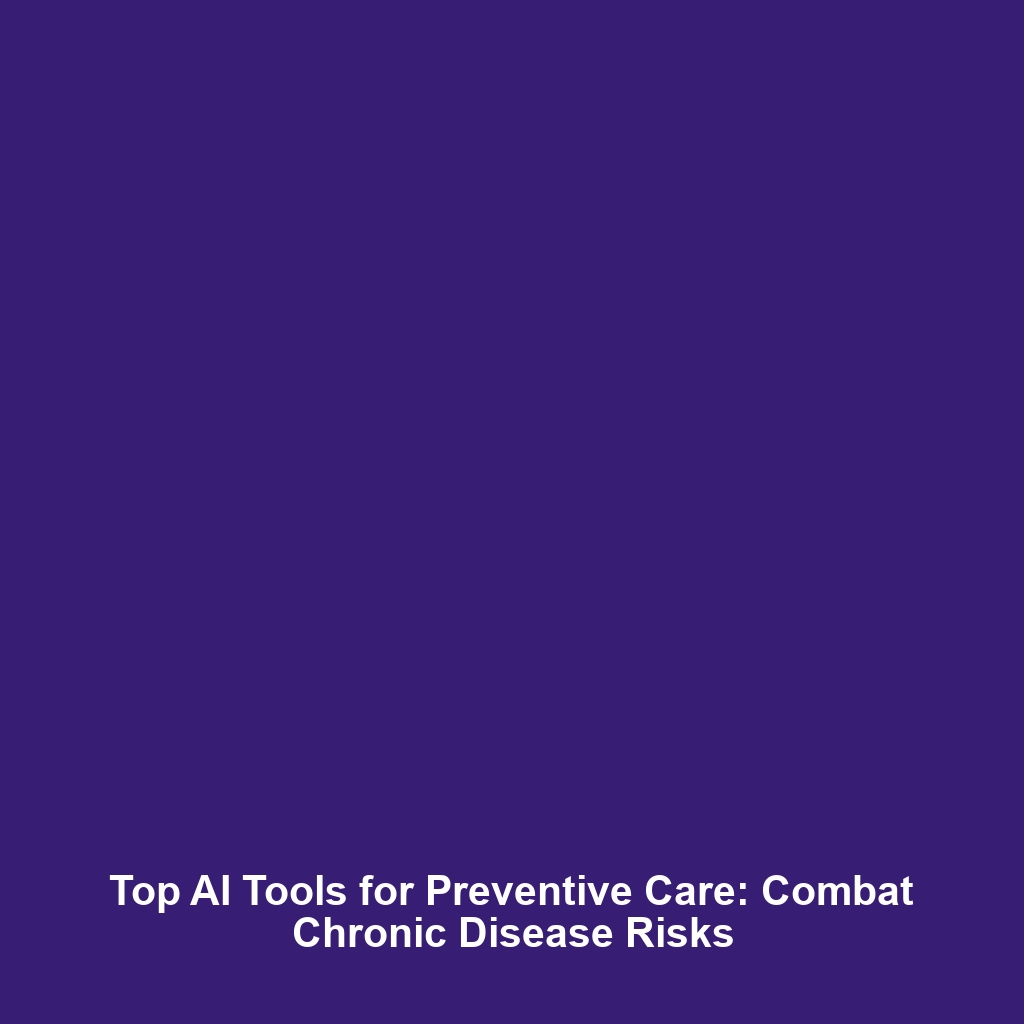Examples of AI Tools Providing Preventive Care Recommendations to Reduce Chronic Disease Risks
As advancements in technology continue to transform the healthcare landscape, artificial intelligence (AI) has emerged as a pivotal component in enhancing patient care. This article explores examples of AI tools providing preventive care recommendations to reduce chronic disease risks, a significant development in the field of AI in Healthcare. By leveraging these innovative technologies, healthcare providers can proactively address chronic diseases, ultimately improving patient outcomes and reducing healthcare costs.
Key Concepts
The integration of AI in healthcare revolves around several key concepts that enhance its effectiveness in preventive care:
- Predictive Analytics: AI utilizes large datasets to identify potential health risks, enabling early interventions.
- Personalized Health Recommendations: AI tools can tailor preventive care advice based on individual health profiles, lifestyle, and genetics.
- Real-Time Monitoring: Continuous health monitoring through wearables and mobile applications allows for timely interventions.
Relevance to AI in Healthcare
These principles underscore the role of AI in predicting health outcomes and its significance in reducing the risk of chronic diseases such as diabetes, heart disease, and obesity. By implementing preventive care recommendations through AI, healthcare systems can shift from reactive to proactive patient care.
Applications and Real-World Uses
Numerous AI tools are currently being deployed in healthcare settings to provide preventive care recommendations. Significant applications include:
- IBM Watson Health: Employs AI algorithms to analyze patient data, offering tailored preventive measures for conditions like diabetes.
- Tempus: Uses genomic data to provide personalized treatment options and preventive recommendations based on patient history.
- Care.ai: Implements AI in nursing homes to monitor patient behaviors and alert caregivers to potential health risks.
These examples illustrate how AI tools are used in preventive care to foster health awareness and early intervention.
Current Challenges
Despite the promising capabilities of AI in preventive care, several challenges persist:
- Data Privacy: Ensuring the confidentiality and security of sensitive health information remains a critical concern.
- Integration with Traditional Systems: Barriers in merging AI tools with existing healthcare infrastructures can hinder implementation.
- Bias in Algorithms: If not carefully managed, biases in training data can lead to inequitable health recommendations.
Addressing these challenges of AI tools is essential for maximizing their potential in healthcare.
Future Research and Innovations
The future of AI tools providing preventive care recommendations appears promising, with ongoing research focused on new breakthroughs. Innovations on the horizon include:
- Enhanced Machine Learning Models: Developing more sophisticated models to improve predictive accuracy and reduce biases.
- Wearable Technology Integration: Advancements in wearables that can provide real-time data analysis and health insights.
- Telehealth Platforms: AI algorithms integrated within telehealth services to offer remote preventive care recommendations effectively.
These innovations signify a shift towards more robust AI applications in healthcare, leading to better chronic disease management.
Conclusion
In summary, the utilization of AI tools providing preventive care recommendations is revolutionizing the approach to chronic disease risks in healthcare. As we continue to embrace AI in healthcare, the potential for improving patient outcomes grows exponentially. For further reading, explore our articles on AI in Healthcare and Chronic Disease Prevention Strategies.

Leave a Reply